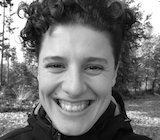My Experience
GCSE AQA Modern Foreign Languages: I taught German, Mandarin Chinese and French as a Teacher of Languages at a secondary school in East London.
Private tuition in London, United Kingdom: I taught corporate classes in Mandarin Chinese (to groups of between 5 to 10 business people) and tutored adults privately in conversational Dutch.
Private tuition abroad: I have provided one-to-one English tuition to adults and primary school students in Beijing for a year.
My Qualifications
Teacher Training – Postgraduate Certificate in Education
UCL Institute of Education, University College London
Qualified Teacher Status obtained
MSc International History (Empires, Colonialism and Globalisation)
London School of Economics and Political Science, University of London
Overall average of 2.1
BA Chinese and History
School of Oriental and African Studies, University of London
Overall average of 2.1
BA Liberal Arts and Sciences
University College Utrecht, Utrecht University
Cum Laude with GPA of 3.72
Fun fact
I tend to bombard my learners with random historical facts from the Horrible Histories BBC series. Here is one: The cities of Dublin and Swansea were built by Vikings. Swansea was named after the Danish king, Sweyn, and since it was an island the Vikings called it ‘Sweyn’s island’ or Sveinsey in old Norse.

